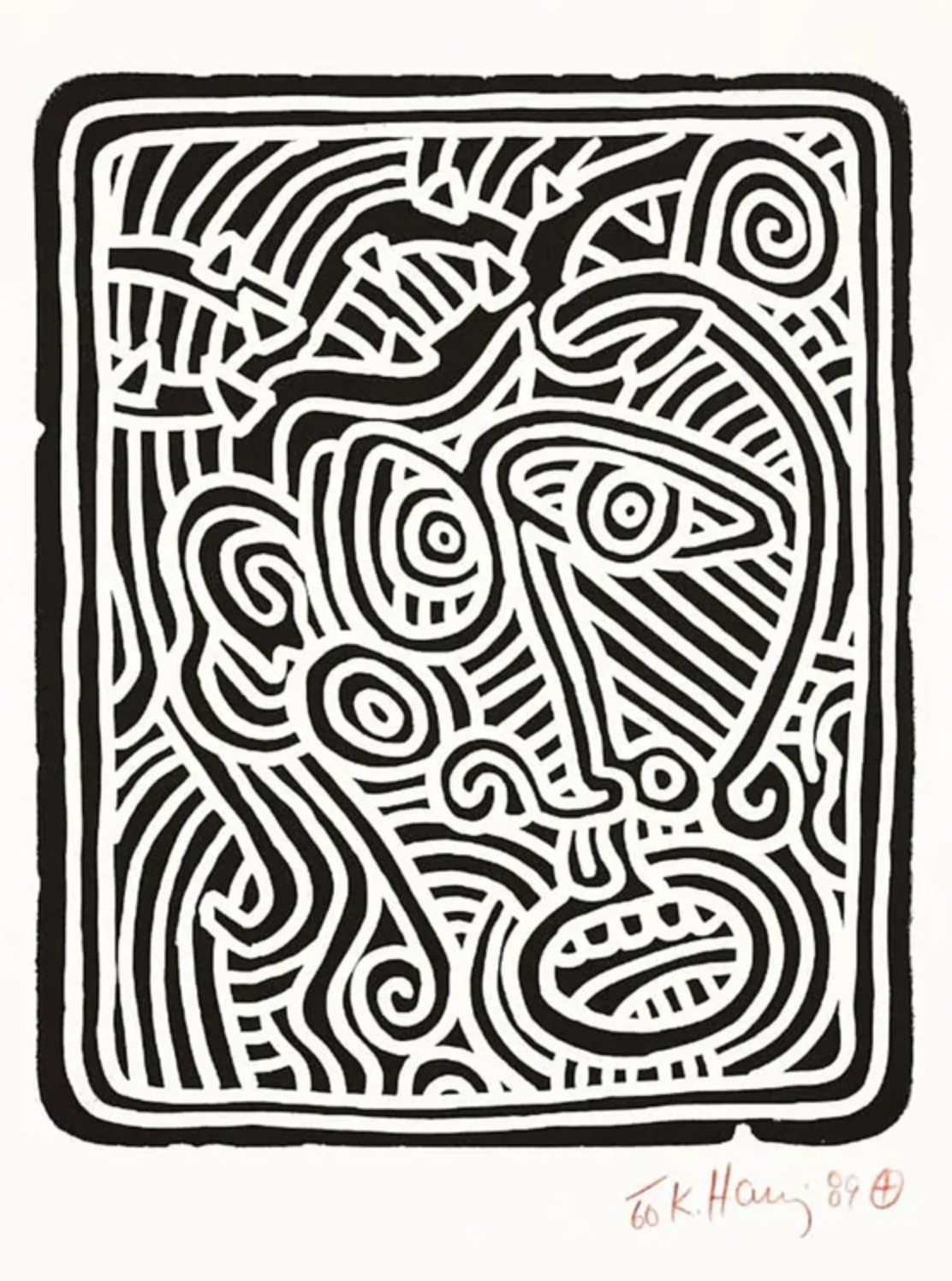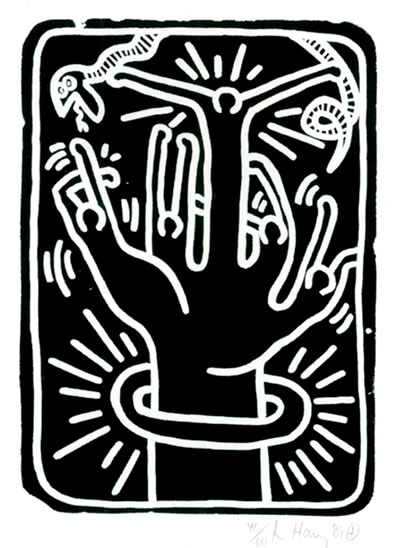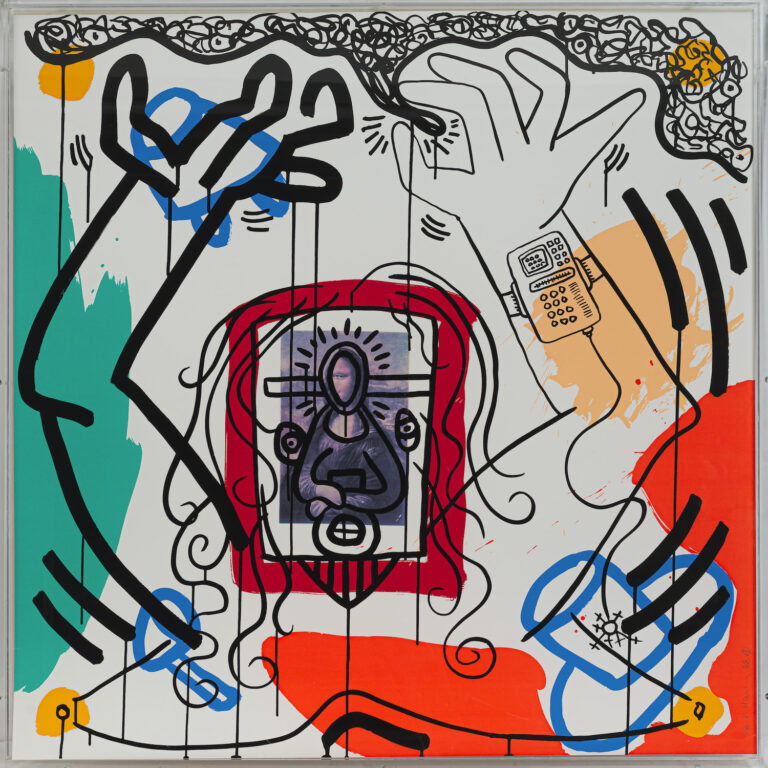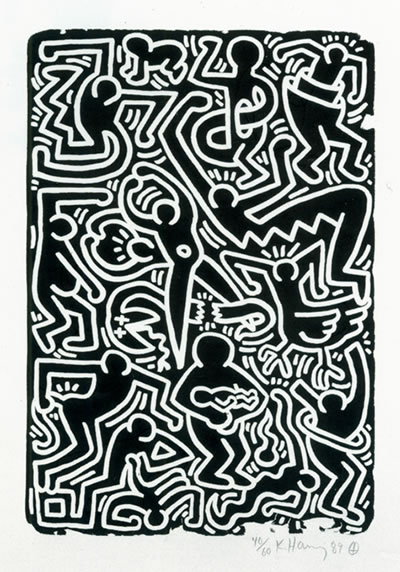In 1989, Keith Haring revisited the venerable art of lithography to produce his Stones series, a collection that blends ancient methods with modern artistry. The very name “Stones” nods to the origins of lithography itself, which employs stone as its primary canvas. Historically, artisans employed smooth limestone, coining the term “lithography” from the Greek “lithos” (stone) and “graphein” (write). This printing process leverages the natural affinities and aversions between water and oil-based substances. An oil-based design on the stone is offset by a gum arabic solution, which clings to the non-oily areas, demarcating the image from its negative space. During printing, water and oily ink interact in a precise dance, ensuring ink adheres only to the design.
Keith Haring, ever the boundary-pusher and known for his prolix use of printing techniques, including etching and screenprinting, embraced lithography early in his career and, nearing its end, reaffirmed his affinity with this method, epitomizing his knack for intertwining age-old practices with fresh creativity and contemporary flair. Through his deft utilization of lithography, Haring’s Stones offers us pieces that are at once profound in symbolism, intricate in detail and timeless in their continuous-line simplicity. They are a potent reminder of art’s enduring power to communicate, transcending both medium and era epoch.
Yet there is the indelible connection between Haring’s pioneering subway art and these masterful lithographs. The series’ white lines set against a profound black backdrop in the series distinctly echo Haring’s early guerrilla artistry in New York’s subway stations. Those chalk drawings, transitory in nature, adorned black advertising boards with their fleeting vitality and hinted at the impermanence of urban life. However, in the Stones series Haring showcases a more refined and deliberate artistry. Dense with symbolism and detail, these lithographs signify a progression from the ephemeral nature of subway graffiti to a more enduring and permanent form of expression. It’s as though Haring is weaving an intricate tapestry, with threads pulled from his iconic subway symbols, to craft pieces that not only pay homage to his urban roots but also demonstrate his evolution as a contemporary lithography virtuoso.






